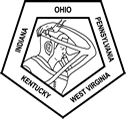<< Back to the abstract archive
Reconstruction of an external hemipelvectomy defect using a pedicled five component chimeric flap.
Pankaj Tiwari, MD
Frederick Durden, MD
Albert Chao, MD
The Ohio State Univeristy Medical Center Department of Plastic and Reconstructive Surgery.
2012-02-01
Presenter: Frederick Durden, MD
Affidavit:
Director Name:
Author Category: Attending
Presentation Category: Clinical
Abstract Category: General Reconstruction
How does this presentation meet the established conference educational objectives?
This presentation meets the established conference educational objectives by discussing current concept in lower extremity reconstruction and the managment of complex pelvic defects.
How will your presentation be used by practicing physicians in the audience?
This presentation will be used to supplement knowledge of surgical option for pelvic reconstruction.
Management of complex lumbosacral neoplastic disease presents unique challenges and requires a multidisciplinary approach. Large malignant pelvic tumors may require external hemipelvectomy where an entire lower extremity including the hemipelvis is removed with disarticulation of the sacroiliac joint and symphysis pubis. When external hemipelvectomy is performed, the reconstructive surgeon must consider osseous reconstruction for structural pelvic support, the elimination of dead space, protection of implanted hardware, intraabdominal support, and skin coverage. Reconstruction must minimize wound healing morbidity, operative time and the number of operative sites, and maximize the potential for rehabilitation. We present a case of reconstruction of an external hemipelvectomy defect following lumbosacral chordoma resection using a pedicled chimeric flap from the sacrificed ipsilateral lower extremity consisting of five components: anterior lateral thigh and posterior leg musculocutaneous flaps and femur, tibia and fibula osseous flaps. The vascularized femur and tibia flaps were used to reconstruct the pelvic girdle. The vascularized fibula flap was used to support the lumbar spine. The anterolateral thigh and posterior leg musculocutaneous flaps were used to provide well vascularized coverage of hardware and supportive mesh, as well as obliteration of dead space. The flap was raised simultaneous with the resection in a two-team approach. This case demonstrates use of a chimeric pedicled flap to provide a robust reconstruction which replaces resected tissues with well vascularized "like" tissues from the ipsilateral lower extremity in a spare-parts fashion.



